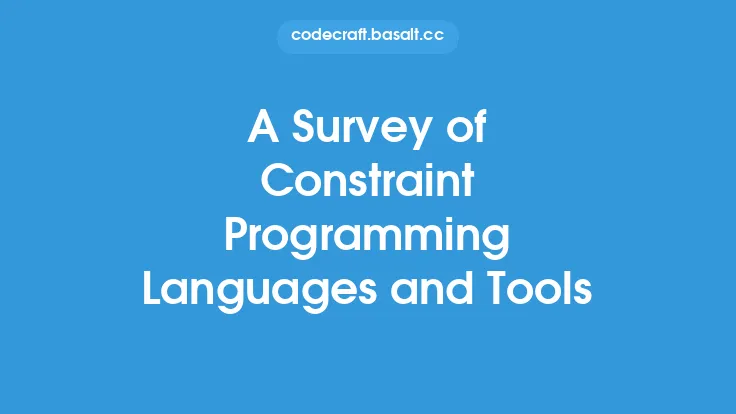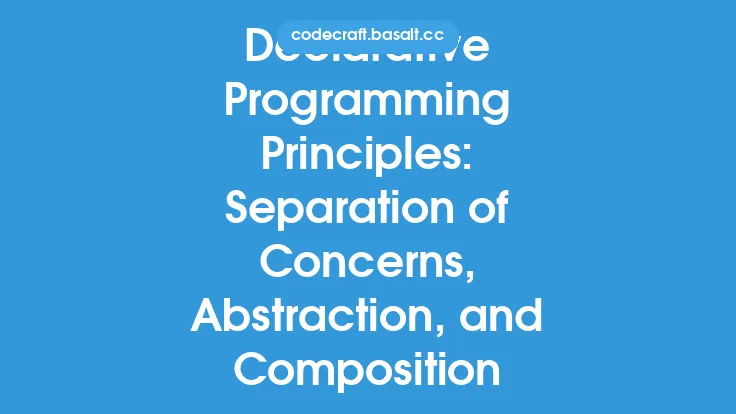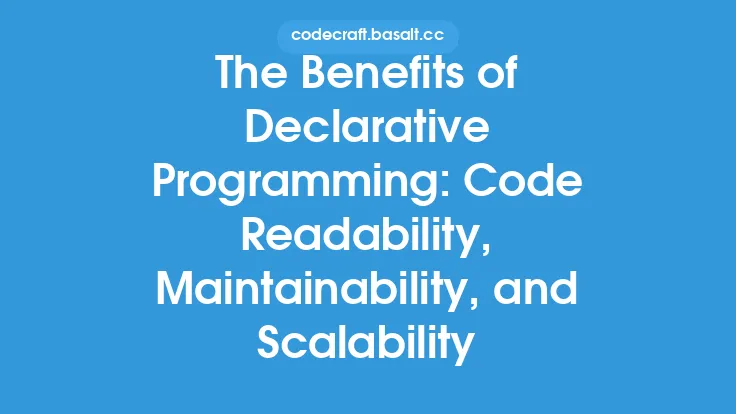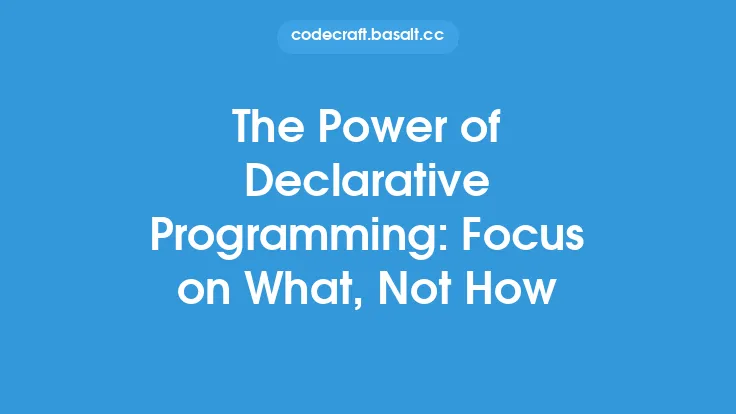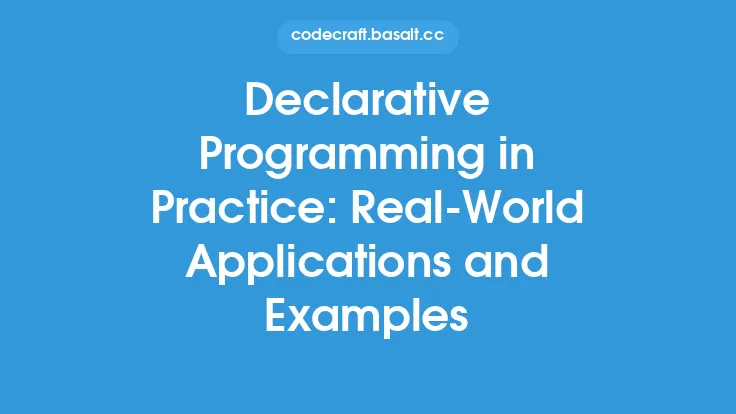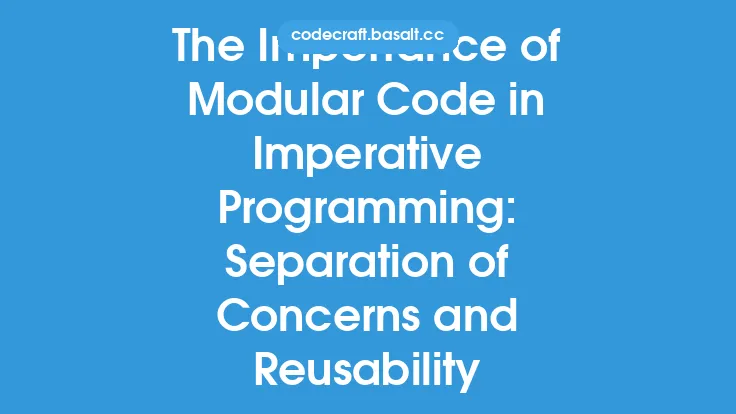Declarative programming languages have been a cornerstone of software development for decades, offering a unique approach to programming that focuses on specifying what the program should accomplish, rather than how it should accomplish it. This paradigm shift has led to the development of a wide range of declarative programming languages, each with its own strengths and weaknesses. In this article, we will survey the existing and emerging options in the realm of declarative programming languages, exploring their features, applications, and future directions.
History of Declarative Programming Languages
The concept of declarative programming dates back to the 1950s, when the first logic-based programming languages were developed. The most notable example from this era is Prolog, which was first introduced in 1972. Prolog is a logic programming language that is based on formal logic, and it is still widely used today in applications such as artificial intelligence, natural language processing, and expert systems. Other early declarative programming languages include Lisp, which was first introduced in 1958, and SQL, which was first introduced in 1974. These languages laid the foundation for the development of modern declarative programming languages, which have become increasingly popular in recent years.
Types of Declarative Programming Languages
Declarative programming languages can be broadly classified into several categories, including functional programming languages, logic programming languages, and constraint programming languages. Functional programming languages, such as Haskell and Lisp, are based on the concept of pure functions, which take input and produce output without modifying the state of the program. Logic programming languages, such as Prolog and Mercury, are based on formal logic, and they use logical statements to specify the behavior of the program. Constraint programming languages, such as Oz and ECLiPSe, are based on the concept of constraints, which are used to specify the relationships between variables in the program.
Existing Declarative Programming Languages
There are many existing declarative programming languages, each with its own strengths and weaknesses. Some of the most popular declarative programming languages include:
- Haskell: A functional programming language that is known for its strong type system and lazy evaluation.
- Prolog: A logic programming language that is widely used in artificial intelligence, natural language processing, and expert systems.
- SQL: A declarative language for managing relational databases, which is widely used in web applications and enterprise software.
- Lisp: A functional programming language that is known for its macro system and dynamic typing.
- Scheme: A functional programming language that is known for its simplicity and flexibility.
- R: A programming language for statistical computing and graphics, which is widely used in data analysis and machine learning.
- Julia: A high-performance programming language that is designed for numerical and scientific computing.
Emerging Declarative Programming Languages
In recent years, there has been a surge of interest in declarative programming languages, and several new languages have emerged. Some of the most promising emerging declarative programming languages include:
- Idris: A functional programming language that is designed for proof assistants and formal verification.
- Agda: A functional programming language that is designed for proof assistants and formal verification.
- Coq: A proof assistant that is based on a functional programming language.
- Lean: A proof assistant that is based on a functional programming language.
- Purescript: A functional programming language that is designed for web development and compiles to JavaScript.
- Elm: A functional programming language that is designed for web development and compiles to JavaScript.
Applications of Declarative Programming Languages
Declarative programming languages have a wide range of applications, including:
- Artificial intelligence: Declarative programming languages are widely used in artificial intelligence, natural language processing, and expert systems.
- Data analysis: Declarative programming languages are widely used in data analysis and machine learning, particularly in the R programming language.
- Web development: Declarative programming languages are widely used in web development, particularly in the Haskell and Lisp programming languages.
- Scientific computing: Declarative programming languages are widely used in scientific computing, particularly in the Julia programming language.
- Database management: Declarative programming languages are widely used in database management, particularly in the SQL programming language.
Future Directions
The future of declarative programming languages looks bright, with several emerging trends and technologies that are likely to shape the field in the coming years. Some of the most promising future directions include:
- Increased use of declarative programming languages in artificial intelligence and machine learning.
- Increased use of declarative programming languages in web development and cloud computing.
- Development of new declarative programming languages that are designed for specific applications, such as scientific computing and data analysis.
- Increased use of formal methods and proof assistants in software development.
- Development of new programming paradigms that combine declarative and imperative programming styles.
Conclusion
Declarative programming languages have come a long way since their inception, and they continue to play an important role in software development. With their focus on specifying what the program should accomplish, rather than how it should accomplish it, declarative programming languages offer a unique approach to programming that is well-suited to a wide range of applications. As the field continues to evolve, we can expect to see new and innovative declarative programming languages emerge, each with its own strengths and weaknesses. Whether you are a seasoned programmer or just starting out, declarative programming languages are definitely worth exploring.
